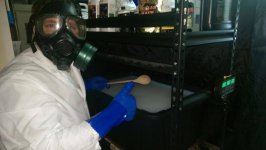Miraculous Meds
Well-known member
I did the orthene/Riptide drench followed by green lacewings and I've not had a single issue for months. I'm confident the RAs are gone from my garden.
badass! Now on the green lacewings, was that just a preventative. Do they live till all the bugs have been eaten and die off? and how was it having them flying around in the garden?



